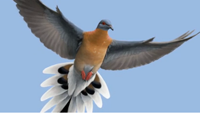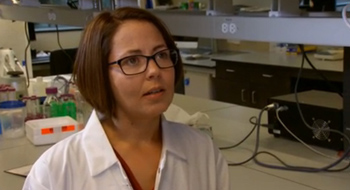The notion of de-extinction, using genetic engineering to bring back species that have become extinct, is attracting wide attention with recent articles in the New York Times and National Geographic and an episode of the National Science Foundation funded program Quest produced by KQED in San Francisco.
Proposals for de-extinction have sparked conversations in bioethics and conservation science. De-extinction and the accompanying moral and ethical questions will be probed Wednesday, April 23 as the UC Santa Cruz Science and Justice Working Group hosts “De-Extinction: Building Future Worlds with Extinct Organisms?”
The symposium takes place from 2 to 6 p.m. in Room 599 of the Engineering 2 building on the UCSC campus.
Panelists include Beth Shapiro, UCSC associate professor of ecology and evolutionary biology, who was quoted widely in both the Times article and Quest program; Oliver Ryder, director of genetics and Kleberg Chair, San Diego Zoo’s Institute for Conservation Research; Paul Koch, UCSC dean of physical and biological sciences and professor of Earth and planetary sciences, Brian Switek, science writer, National Geographic blogs; and Allen Thompson, associate professor of philosophy, Oregon State University. Donna Haraway, distinguished professor emerita in the UCSC history of consciousness department will provide closing commentary.
The organizers' goal is to deepen the discussion by engaging questions of science and justice. "We will consider the fundamental principles that shape our visions of a flourishing future for all species on the planet, and re-examine longstanding questions about the constitution of and proper relations between science, technology, and nature. The question at the center of our discussions will be: What kind of future world(s) do we want to make, and what role, if any, should engineered species have in it?"
In the first panel, “Conservation and Biotechnology: For Whose Good?” speakers will explore the role of biotechnology in conservation efforts.
The second panel, “Science, Media and Spectacle: How Does Media Support, Threaten, or Change the De-extinction Agenda?” will explore the narratives of de-extinction that have captured public attention.
Public attention and excitement brings in funders and participants, but also may generate conflict with other conservation research, practices and goals. Excitement generated by this coverage often overlooks the central question: Which values, research agendas and techniques should guide conservation practices and our collective multi-species futures in an age of extinction?
The symposium builds on a series of ongoing Science & Justice Working Group conversations about justice in a more than human world.
De-extinction: Building future worlds with extinct organisms?




